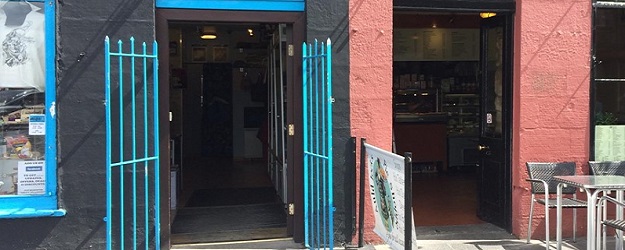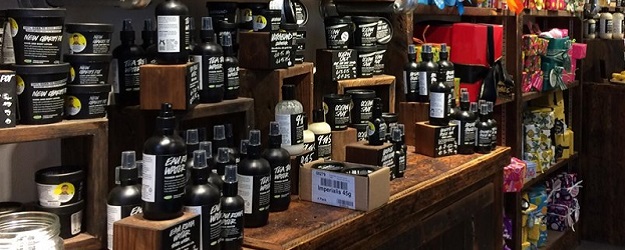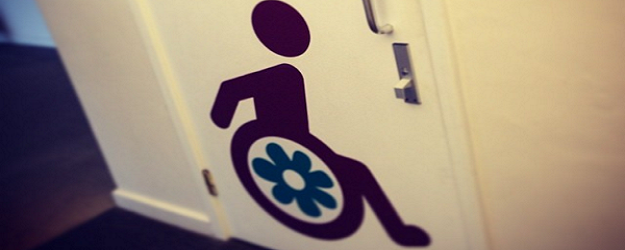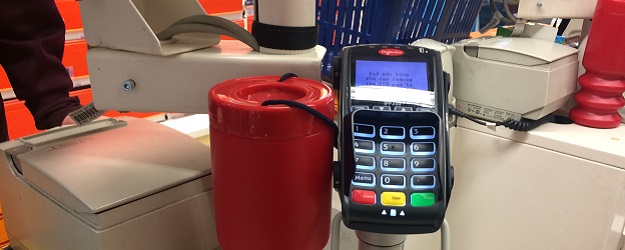7 ways to open up your shop to more people

If you’re a shopkeeper in the UK, there are nearly 12 million people who see a 'shop closed' sign on your door, even during opening hours. This is because disabled people make up around 20% of the British population, and 83% of those that we asked thought shops were among the most inaccessible places in the country. However, you might be surprised to hear that you don’t necessarily have to knock down any walls to help fix this!
Having an accessible shop is a fantastic way to open your doors to a large number of new customers. Features that can improve the experience of shopping for disabled people and their families and friends can also make shopping easier for customers with prams or young children, tourists carrying heavy luggage, or some elderly customers who might appreciate the steps you take. Read on to find out how you can open up your shop to as many people as possible.
1. Have a stand out entrance
If your entrance isn’t easy to find, you may be missing out on many potential customers! Keep your entrance as clear as possible by maintaining plants and carefully placing advertisement boards so that they do not obstruct paths or doorways. Consider installing brighter lighting around your shopfront for darker winter months or late night shopping.

It’s no secret that steps can limit independent access for disabled people. If it simply isn’t possible to make a physical adjustment to your entryway, there are other solutions to overcoming this common barrier. Installing attractive handrails can assist people with mobility impairments into your building. These are also pretty handy for staff in winter when steps might be a little slippery! Consider also painting the outer edges of your steps with a contrasting colour to make them easier to manage by those with a visual impairment; the colour choice is all yours! Don’t forget that while you should never assume a disabled customer will want assistance to get over the step, it is good to politely offer.
If you have room to store a good quality temporary ramp, why not invest in one for wheelchair users? Don’t forget to advertise that one is available as some customers may turn away before they even know they can access the shop. Temporary ramps are a useful solution as some customers may find steps easier to use, therefore the option of both means of entry remains available. If you intend to use temporary ramps, consider installing a doorbell so that customers can alert staff of their presence.
2. Experiment with your shop’s layout
A logically planned shop-floor layout will benefit all customers to your store and will make it easier for them to buy things. Keep aisles and spaces around displays as wide as possible, and be aware of any items such as shoes or toys left behind by customers on the floor. Keep signage concise and clear at a height that can be viewed by people standing or sitting down. If you can supplement your signs with pictorial symbols this can be beneficial to many customers, including those whose first language is not English. Be aware that signs behind glass can present a difficulty for some people when reading as the words can be obstructed by glass reflection.

Can your customers see everything you are selling? Try to arrange products so that the same item can be viewed at a variety of different heights. This means that people won’t have to stoop too low or risk toppling items by reaching high up to view them. If it isn’t possible to arrange your goods in this way, always offer assistance to customers who may appreciate it when browsing. Also try to ensure that your staff are up to date and knowledgeable about what they’re selling in case they may need to describe an object to a customer with a visual impairment. Visually impaired customers could also benefit from larger price labels on shelves and products where possible.
3. Designate an accessible fitting room
If you have changing rooms to allow customers to try on clothes, think about designating one as an accessible fitting room, particularly if your shop is on more than one level as it can be helpful to have an easy to access, brightly lit, large room on the ground floor for customers to try on items. Sturdy grab rails at varying heights for those standing or sitting can offer assistance to customers trying on clothes. You might like to fit lowered clothes rails or coat hooks to benefit wheelchair users using the changing room. It is also a good idea to install an emergency alarm in an accessible fitting room, and remember to allow the pull cord to reach all the way to the floor in the event that an emergency does occur and a customer needs immediate assistance.
4. Commit to good customer service
You’ll know that communication and attitude is key to excellent customer service, and your staff will no doubt be well trained in service with a smile! In some instances, however, different methods of communication may suit different customers. Some people may prefer to write something down, or others may wish to lip read for example. If you’re not sure what might be helpful, ask.
Communication can be vastly improved by fitting an induction loop system beside your till points that staff know how to use confidently. This can discretely improve the clarity of sound for customers that use a hearing aid and will reduce any confusion that may arise when communicating at the point of sale. If you install an induction loop system, don’t forget to include a sign to signal that the feature exists; otherwise it might not get used!
Try to also keep particularly noisy areas, such as coffee machines or photocopiers, apart from places where you may need to talk to your customers clearly. Once your customers have purchased items, offer to help carry heavy bags to a car or down any steps if assistance may be needed. Simple gestures such as holding doors open or calling a taxi service for your customers can leave a lasting impression and improve their shopping experience.
5. Increase stay time with customer toilets

While it is not possible for all shops to fit customer toilets, larger shops in particular should consider installing one or more if possible to allow customers to browse for longer. Accessible toilets are all different but should meet, and where possible exceed minimum requirements in dimension. Check out our World Toilet Day article about how to make the most of your accessible loo if you have one.
6. Make it easy to pay

If possible, install a dropped counter at service desks and checkouts to make it easier for wheelchair users to purchase items. If you are unable to do this, do keep a spare folder or clipboard handy to allow customers to lean on when signing papers or writing cheques should they require it. In this scenario, encourage your staff to come out from behind the counter to serve customers who may not be able to see over it. It is also particularly useful to have portable chip and pin machines, or those with an extended cable so that it can be handed to the customer at the counter.
Does your shop require customers to wait in a queue to collect items? If you have a collection point or waiting area, try to have seats available for customers who may have difficulty standing for lengths of time and if possible try to make the area as spacious as possible for wheelchair users who are waiting to collect items.
7. List on Euan’s Guide and encourage customers to review!
Finally, why let all of these fantastic things you can do for your customers stay a secret? By listing your venue on Euan’s Guide you can share what facilities you do and do not have in your shop so that customers will know what to expect and may be more likely to visit!
Shop owners will know that first-hand recommendations are really powerful, therefore encouraging your customers to leave a review of your venue can act as a fantastic endorsement for your business. If you haven’t done so already, list your venue now. You can also read our guide to writing a good listing here.


 Follow Euan's Guide on Instagram
Follow Euan's Guide on Instagram
 Follow Euan's Guide on LinkedIn
Follow Euan's Guide on LinkedIn
 Follow Euan's Guide on Facebook
Follow Euan's Guide on Facebook


Comments
You have to be signed in to leave a comment.
Login / Signup